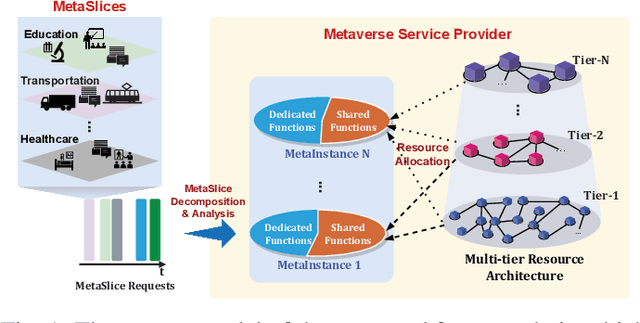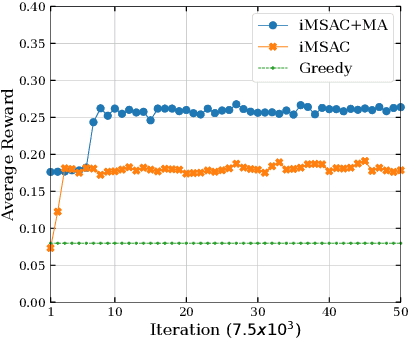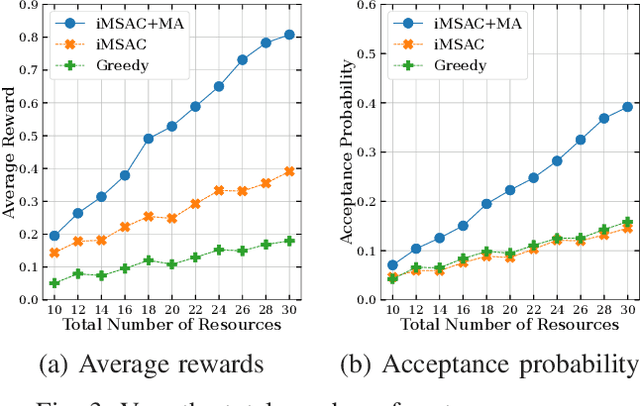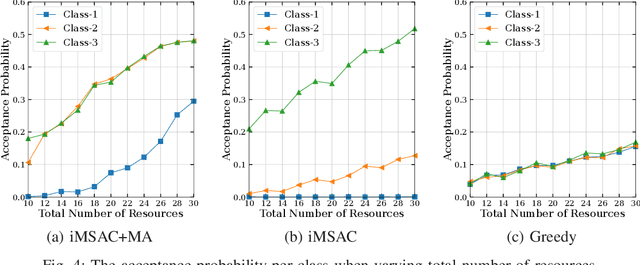Khoa T. Phan
Graph Spatiotemporal Process for Multivariate Time Series Anomaly Detection with Missing Values
Jan 11, 2024



Abstract:The detection of anomalies in multivariate time series data is crucial for various practical applications, including smart power grids, traffic flow forecasting, and industrial process control. However, real-world time series data is usually not well-structured, posting significant challenges to existing approaches: (1) The existence of missing values in multivariate time series data along variable and time dimensions hinders the effective modeling of interwoven spatial and temporal dependencies, resulting in important patterns being overlooked during model training; (2) Anomaly scoring with irregularly-sampled observations is less explored, making it difficult to use existing detectors for multivariate series without fully-observed values. In this work, we introduce a novel framework called GST-Pro, which utilizes a graph spatiotemporal process and anomaly scorer to tackle the aforementioned challenges in detecting anomalies on irregularly-sampled multivariate time series. Our approach comprises two main components. First, we propose a graph spatiotemporal process based on neural controlled differential equations. This process enables effective modeling of multivariate time series from both spatial and temporal perspectives, even when the data contains missing values. Second, we present a novel distribution-based anomaly scoring mechanism that alleviates the reliance on complete uniform observations. By analyzing the predictions of the graph spatiotemporal process, our approach allows anomalies to be easily detected. Our experimental results show that the GST-Pro method can effectively detect anomalies in time series data and outperforms state-of-the-art methods, regardless of whether there are missing values present in the data. Our code is available: https://github.com/huankoh/GST-Pro.
Correlation-aware Spatial-Temporal Graph Learning for Multivariate Time-series Anomaly Detection
Jul 17, 2023Abstract:Multivariate time-series anomaly detection is critically important in many applications, including retail, transportation, power grid, and water treatment plants. Existing approaches for this problem mostly employ either statistical models which cannot capture the non-linear relations well or conventional deep learning models (e.g., CNN and LSTM) that do not explicitly learn the pairwise correlations among variables. To overcome these limitations, we propose a novel method, correlation-aware spatial-temporal graph learning (termed CST-GL), for time series anomaly detection. CST-GL explicitly captures the pairwise correlations via a multivariate time series correlation learning module based on which a spatial-temporal graph neural network (STGNN) can be developed. Then, by employing a graph convolution network that exploits one- and multi-hop neighbor information, our STGNN component can encode rich spatial information from complex pairwise dependencies between variables. With a temporal module that consists of dilated convolutional functions, the STGNN can further capture long-range dependence over time. A novel anomaly scoring component is further integrated into CST-GL to estimate the degree of an anomaly in a purely unsupervised manner. Experimental results demonstrate that CST-GL can detect anomalies effectively in general settings as well as enable early detection across different time delays.
Dynamic Resource Allocation for Metaverse Applications with Deep Reinforcement Learning
Feb 27, 2023



Abstract:This work proposes a novel framework to dynamically and effectively manage and allocate different types of resources for Metaverse applications, which are forecasted to demand massive resources of various types that have never been seen before. Specifically, by studying functions of Metaverse applications, we first propose an effective solution to divide applications into groups, namely MetaInstances, where common functions can be shared among applications to enhance resource usage efficiency. Then, to capture the real-time, dynamic, and uncertain characteristics of request arrival and application departure processes, we develop a semi-Markov decision process-based framework and propose an intelligent algorithm that can gradually learn the optimal admission policy to maximize the revenue and resource usage efficiency for the Metaverse service provider and at the same time enhance the Quality-of-Service for Metaverse users. Extensive simulation results show that our proposed approach can achieve up to 120% greater revenue for the Metaverse service providers and up to 178.9% higher acceptance probability for Metaverse application requests than those of other baselines.
From Unsupervised to Few-shot Graph Anomaly Detection: A Multi-scale Contrastive Learning Approach
Feb 11, 2022Abstract:Anomaly detection from graph data is an important data mining task in many applications such as social networks, finance, and e-commerce. Existing efforts in graph anomaly detection typically only consider the information in a single scale (view), thus inevitably limiting their capability in capturing anomalous patterns in complex graph data. To address this limitation, we propose a novel framework, graph ANomaly dEtection framework with Multi-scale cONtrastive lEarning (ANEMONE in short). By using a graph neural network as a backbone to encode the information from multiple graph scales (views), we learn better representation for nodes in a graph. In maximizing the agreements between instances at both the patch and context levels concurrently, we estimate the anomaly score of each node with a statistical anomaly estimator according to the degree of agreement from multiple perspectives. To further exploit a handful of ground-truth anomalies (few-shot anomalies) that may be collected in real-life applications, we further propose an extended algorithm, ANEMONE-FS, to integrate valuable information in our method. We conduct extensive experiments under purely unsupervised settings and few-shot anomaly detection settings, and we demonstrate that the proposed method ANEMONE and its variant ANEMONE-FS consistently outperform state-of-the-art algorithms on six benchmark datasets.
Generative and Contrastive Self-Supervised Learning for Graph Anomaly Detection
Aug 23, 2021



Abstract:Anomaly detection from graph data has drawn much attention due to its practical significance in many critical applications including cybersecurity, finance, and social networks. Existing data mining and machine learning methods are either shallow methods that could not effectively capture the complex interdependency of graph data or graph autoencoder methods that could not fully exploit the contextual information as supervision signals for effective anomaly detection. To overcome these challenges, in this paper, we propose a novel method, Self-Supervised Learning for Graph Anomaly Detection (SL-GAD). Our method constructs different contextual subgraphs (views) based on a target node and employs two modules, generative attribute regression and multi-view contrastive learning for anomaly detection. While the generative attribute regression module allows us to capture the anomalies in the attribute space, the multi-view contrastive learning module can exploit richer structure information from multiple subgraphs, thus abling to capture the anomalies in the structure space, mixing of structure, and attribute information. We conduct extensive experiments on six benchmark datasets and the results demonstrate that our method outperforms state-of-the-art methods by a large margin.
 Add to Chrome
Add to Chrome Add to Firefox
Add to Firefox Add to Edge
Add to Edge